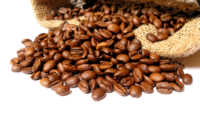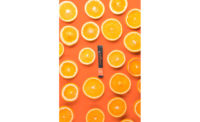Touting the addition of antioxidants is the latest rage in functional foods, particularly among overseas marketers.
Touting the addition of antioxidants is the latest rage in functional foods, particularly among overseas marketers. For example, while attending SIAL in Paris this past October, I found some interesting innovations from South Africa’s Fair Cape Dairies.
The new Fair Cape Free Range line of cup yogurt includes a variety flavored with regionally grown rooibos tea, a tea type recognized as being extremely rich in antioxidants. This is the first yogurt ever to carry the Cancer Association of South Africa (CANSA) Smart Choice emblem, which designates the product as a “smart choice” mainly because a 100-gram serving contains the same amount of antioxidants as one cup of brewed rooibos tea.
There’s also Fair Cape RooiBoost Low Fat Drinking Yoghurt with Rooibos (pictured below), which contains six cups worth of rooibos tea in every shot. The company says it counteracts the process of aging and immune system deterioration, thus reducing the risk of heart disease and cancer.
Who can say no to these promises? Even though consumers may not understand the why and the how of antioxidants’ role in assisting with health and wellness, they seem to believe what they hear and read. And for many consumers, that knowledge is enough to make them choose antioxidant-enriched foods. At my age I have become an antioxidant junkie and I know I am not alone.
According to Chicago-based Mintel, the antioxidant-enhanced food and beverage category is booming. Mintel’s Global New Products Database reports that in 2009, 2,075 antioxidant-labeled food and beverages were introduced, which is a significant jump compared to the 459 products launched in 2005. Clearly, formulators are responding to the growing body of research associating antioxidant consumption with health and wellness.
Not only are foods that have always contained known antioxidants, including carotenoids, polyphenols (e.g., anthocyanin, flavonoids and resveratrol) and vitamins now being flagged for their antioxidant content, other foods, such as dairy products, are being enhanced with these ingredients. Such ingredients may be added directly (e.g., vitamin-E fortified) or indirectly (e.g., made with anthocyanin-rich blueberries).
Another product that debuted at SIAL further demonstrates the power of formulating with antioxidant-rich ingredients. Marketed by France’s Daregal SA, the frozen product line, branded -18°C (the temperature at which it is to be held prior to consumption), consists of five different powerhouse formulations. Sold in packs of seven pouches (photo, left), a week’s supply, a single pouch of the frozen puree is to be blended with water, juice or milk and ice and consumed much like a smoothie. For example, -18°C [Beauté] is a concentrated source of four antioxidant-rich ingredients: aloe vera, grape seed extract, lutein and rosemary.
So what exactly do these antioxidants do in the body? They are believed to help neutralize free radicals, which are unstable molecules associated with the development of a number of illnesses including cancer, cardiovascular disease and age-related conditions such as Alzheimer’s. However, all antioxidants are not created equal, which is why the European Food Safety Authority (EFSA) has rejected many health claims associated with the generic term antioxidant.
EFSA’s health claims panel has stated, “…no evidence has been provided to establish that having antioxidant activity/content and/or antioxidant properties is a beneficial physiological effect.” However, in their third batch of article 13.1 opinions released at the end of October, the panel concluded, “that a cause and effect relationship has been established between the dietary intake of vitamin E and protection of DNA, protein and lipids from oxidative damage.”
In the United States, package claims vary by antioxidant. Terms such as “excellent source” are limited to vitamins with established Daily Values. Other known antioxidants will typically flag a content claim. For example, the WineTime nutrition bar label states, “contains more resveratrol than 50 glasses of red wine.” With many tea products, the oxygen radical absorbance capacity (ORAC) of the antioxidants is quantified.
For more information on flagging antioxidants on product labels, refer towww.fda.gov/OHRMS/DOCKETS/98fr/FDA-1995-N-0400-GDL.pdf.
Adding Antioxidants
Looking for a reprint of this article?
From high-res PDFs to custom plaques, order your copy today!





